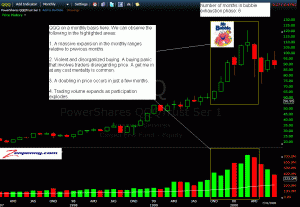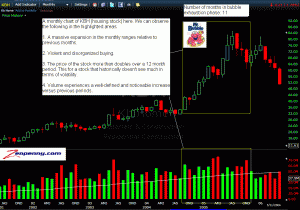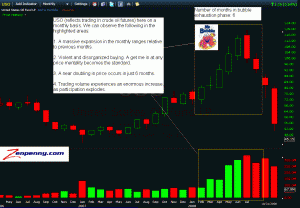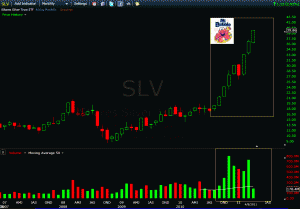BUBBLE WATCH: SILVER
This article also featured on thestreet.com
Silver hit a 30-year high this week. Whenever an asset class - in this case silver - experiences a rapid increase in price coupled with the attention of a majority of investors and media, talk of a bubble begins making its way around the numerous outlets investors use to express their feelings with respect to the financial markets.
Defining a bubble is a subjective exercise, at best. Asset bubbles inherently vary in the amount of appreciation they experience, the length of time they persist and the underlying reasons they exist in the first place. Some bubbles can continue for years and have very well-defined reasoning behind them. Others can last only a few months with the reasoning being without fundamental merit.
The only way I have found to define a bubble and come up with any rational target for its expiration is through price action. Fundamentals will never allow you to define a bubble, as they become clouded by emotion during bubble phases. Realistic thinking and rationality is replaced by pervasive greed and unrealistic expectations.
The price action during most asset bubbles is surprisingly similar if you filter out the noise by using either a weekly or monthly chart. There are 4 key elements involved:
1. A rapid increase in price that blows away anything that the asset has done in the recent and distant past.
2. Buying that is violent and disorganized.
3. Weekly or monthly price ranges that begin expanding exponentially versus previous bars.
4. A dramatic increase in trading volume.
The best way to illustrate these examples is by viewing the charts of past asset bubbles and looking for the similarities. Fortunately, we have had quite a few assets bubbles over the past 10 years that we can use to formulate an opinion on silver.
We're going to look at the bubble in the Nasdaq between 1999-2000. The bubble that developed in real estate, expressed through KBH. And the bubble that developed in oil between 2007 - 2008. We will look at the price action on a monthly basis to filter out a majority of the noise.
You can see that the price action and participation amongst these three sectors during each of their respective bubble phases was very similar.
Now let's see if there are similarities occurring in the silver market at present:
1. Do we have a notable expansion in the monthly ranges occurring relative to previous months?
Yes. The average monthly range from January 2007 - August 2010 was 2.16. From September of 2010 - April 2011 it has nearly doubled to 4.02.
2. Has the price action started to reflect a buying panic that disregards price?
Yes. Almost every monthly bar has closed at or near its highs. Bidders are climbing over each other in an effort to buy. This is irrespective of the velocity of the move in the previous days, weeks or months.
3. Has the price of silver experienced a rapid appreciation in a relatively short amount of time?
Yes. Since September of 2010 it is up 111%.
4. Has volume expanded dramatically as participation has exploded?
Yes. Average volume has increased 150% over the past 8 months.
According the silver aficionados, we may be entering a new era where the devaluation of paper assets is leading to a nearly endless thirst of real monetary assets, such as silver.
The financial markets are essentially a game of odds, where experienced investors will attempt to position themselves at the point where the potential or odds for profit are the greatest. While the possibility that we are facing a statistical outlier must always be taken into consideration, reasonable odds are that we are not.
Given the fact that silver is behaving much like asset bubbles of the past -- along with the fact that it has become the talk of the investment media, bloggers and newsletters. It is safe to assume that the odds strongly favor a punishing attack on those who are long silver at present.
When we look back on the chart of the SLV some years from now, we may indeed be using it as reference for whatever bubble will exist at that time. We will then wonder how the market fooled everyone into believing that the bubble in silver was any different than the myriad of bubbles we have failed to learn from in the past.




